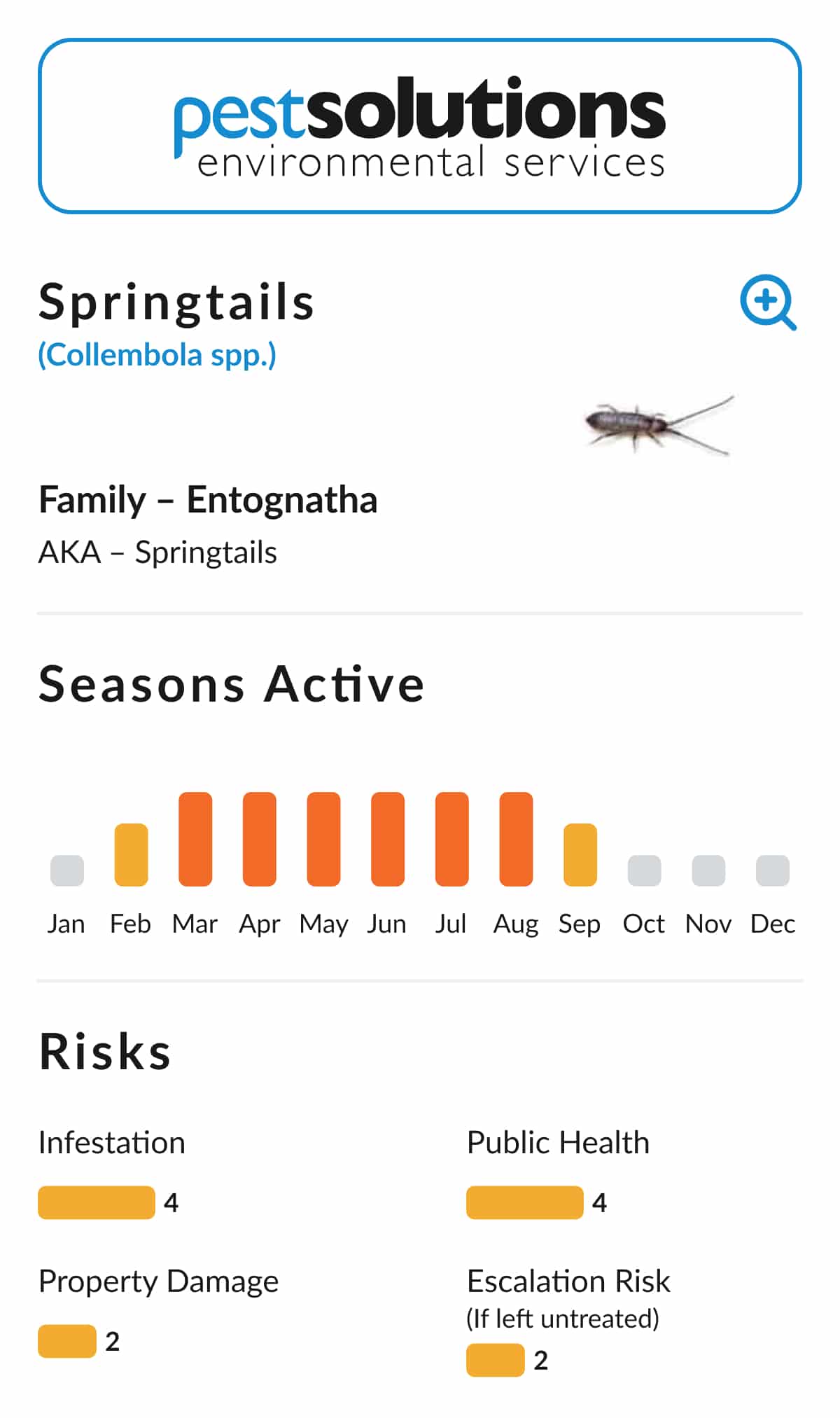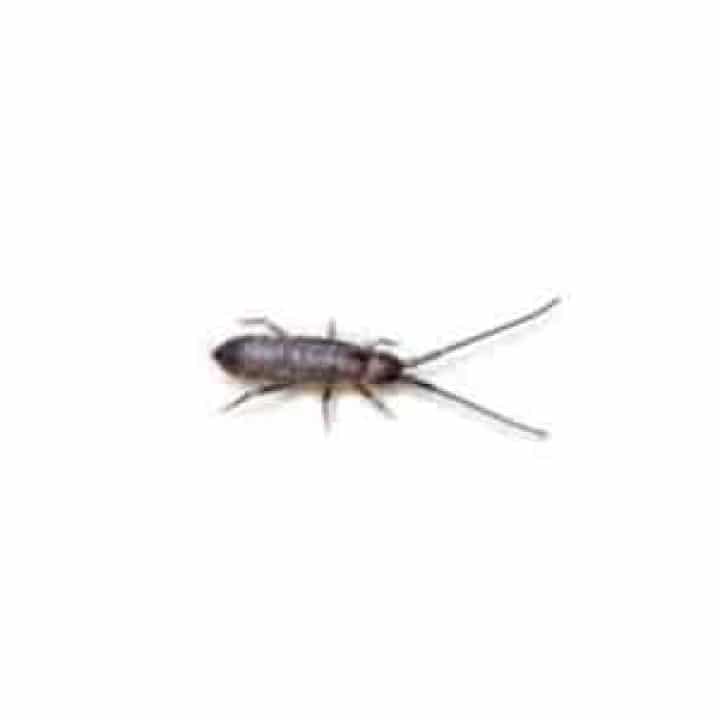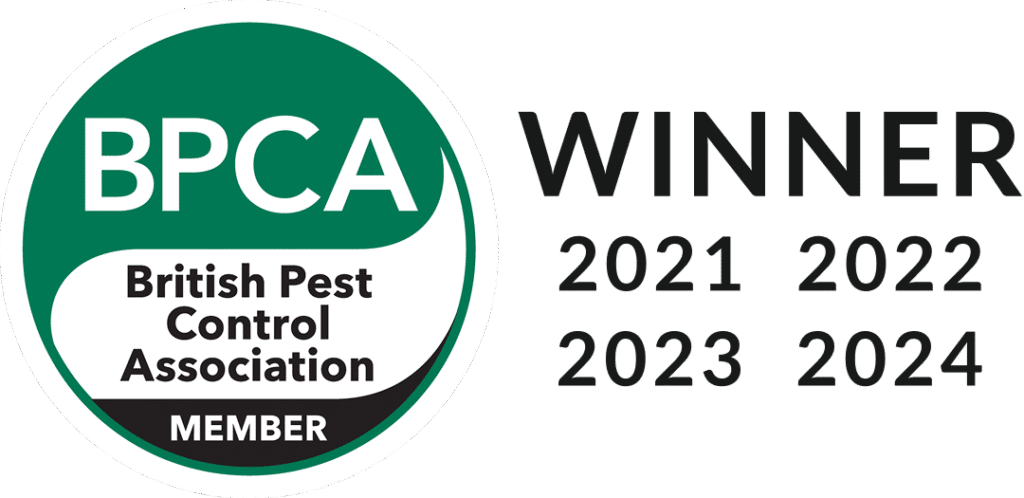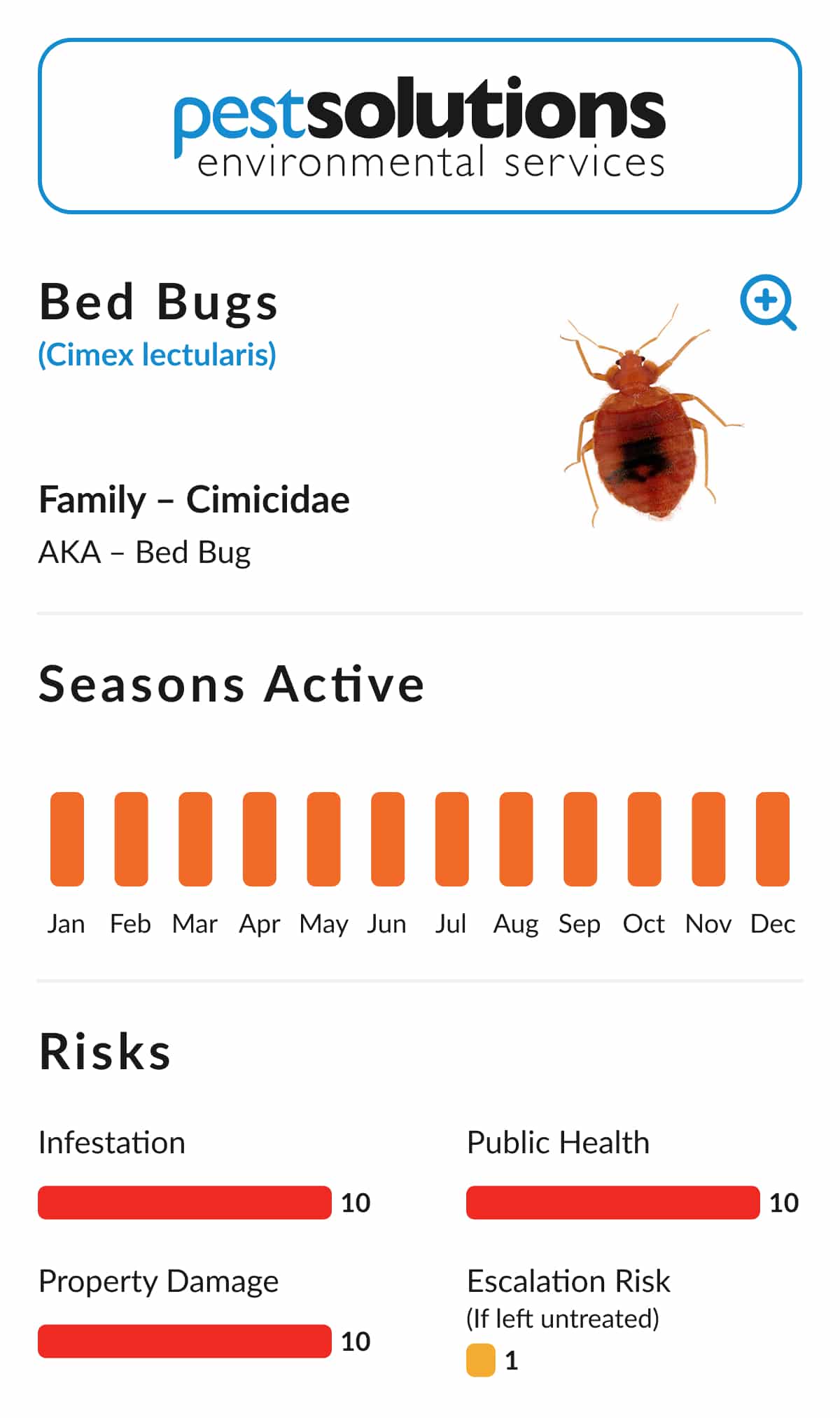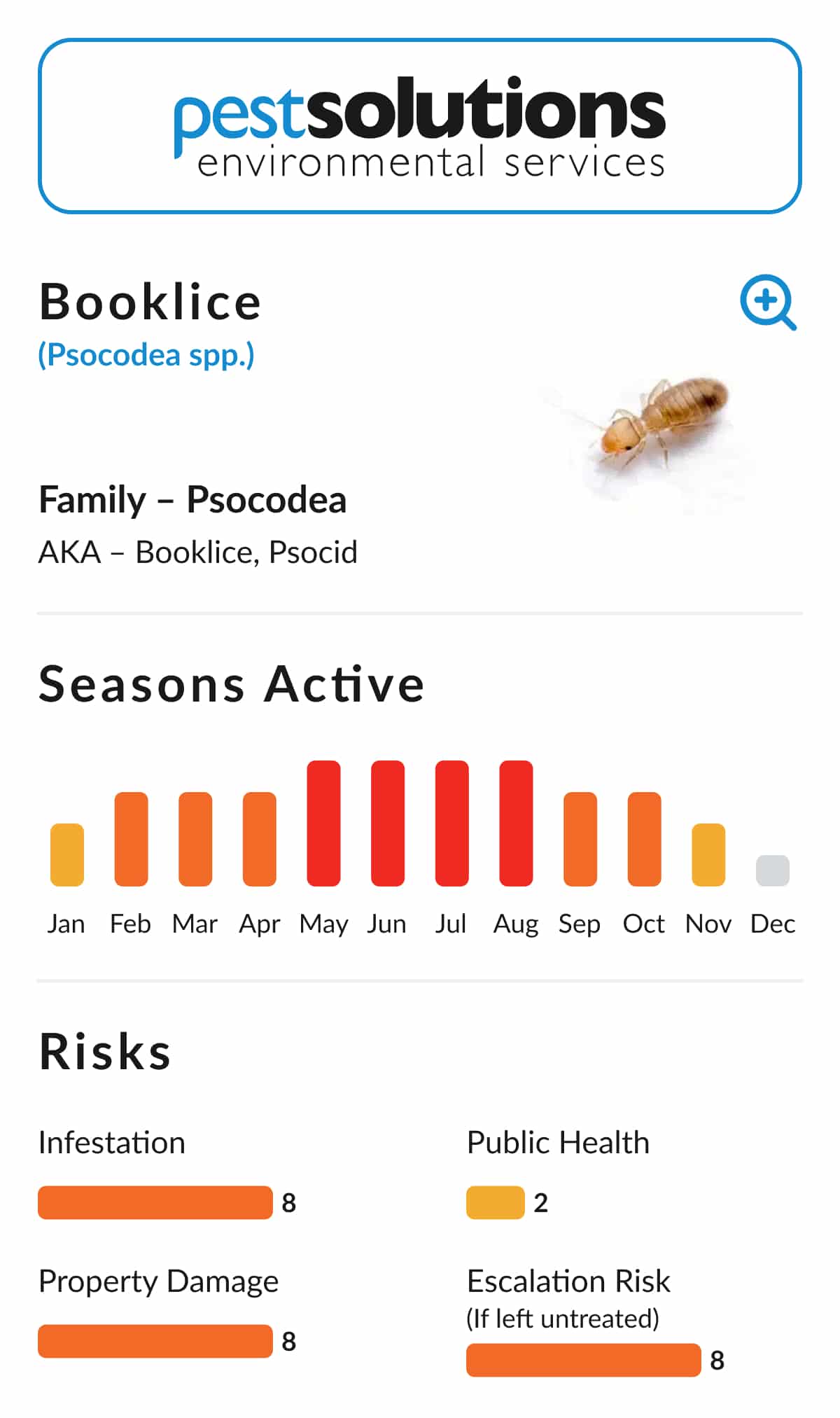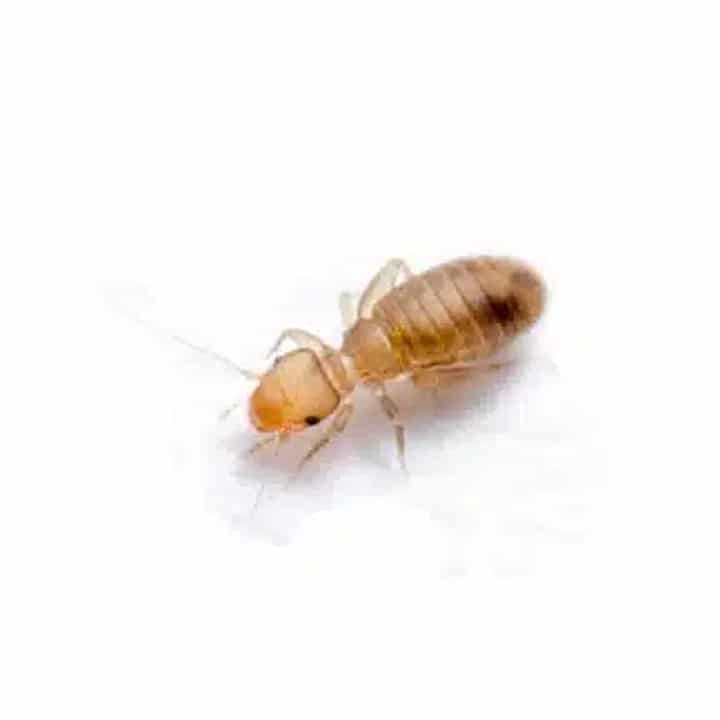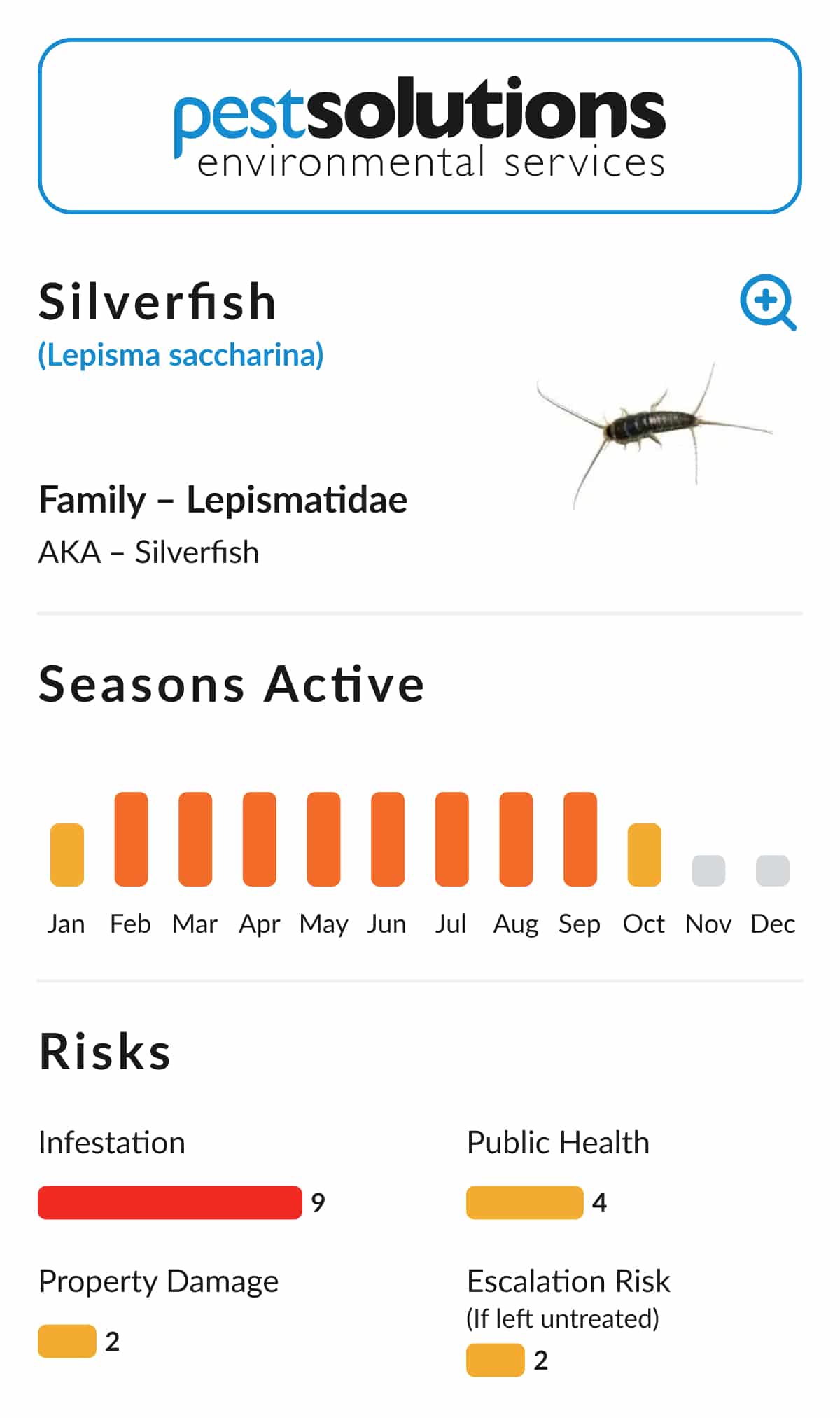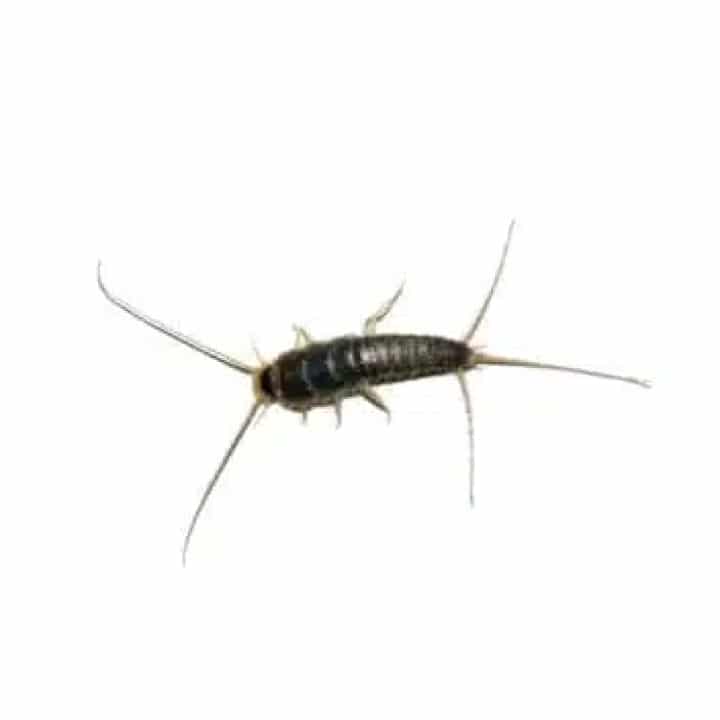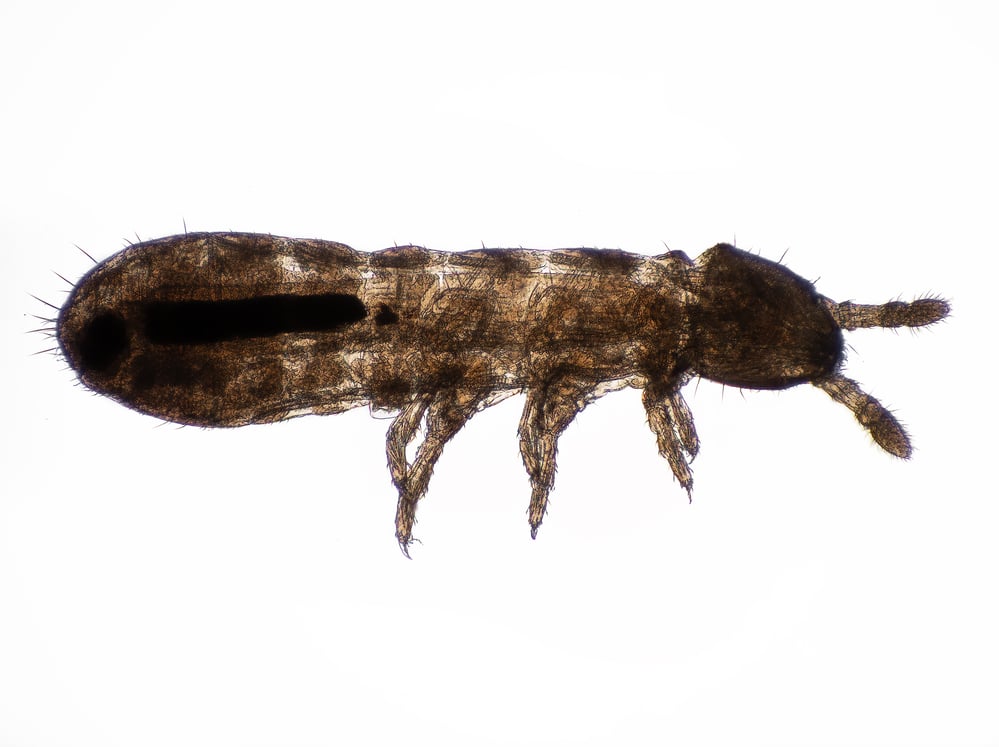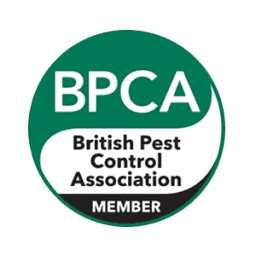Springtails are tiny, wingless insects that thrive in damp soil and decaying organic matter. Unlike other insect pests, Springtails do not bite or sting humans, but they can still be a significant problem due to their rapid breeding and tendency to invade human inhabited properties.
Key Facts About Springtails (Collembola spp.)
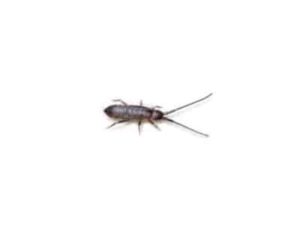
Yet while these creatures are tiny, they have the remarkable ability to leap up to ten centimetres into the air, nearly 4 inches – the equivalent of a human jumping over the Eiffel Tower.
If you spot large groups of tiny black bugs jumping inside your home, Springtails are highly likely to be the culprits.
In fact, Springtails are probably the most common summertime pest that is not commonly known amongst homeowners! The incredible leaping ability of Springtails (or tiny black bugs that jump!) is thanks to their ‘tail’ which is actually a remarkable appendage known as a furcula which is used to propel them skywards.
Most of the time, this long tail is tucked neatly under their bodies. When the springtail detects danger or simply wants to get from one point to another quickly, they flick this tail out from beneath them and propel themselves through the air. On their own, leaping springtails are hard to spot, but when large numbers of them jump all at once, they can be a surprising sight to the unwary individual. Should they end up landing on their backs, springtails also have a pair of appendages which they can use to right themselves. When not being used for this, these appendages are also used to spread a special liquid over their bodies so that they do not dry out.
Strictly speaking, springtails are not insects; true insects must have external mouthparts, whereas springtails chew their food inside their mouths. However, like many insects, they prefer dark, damp locations and will actively seek out such spaces to breed in. They also have positive phototaxis, an attraction to light, meaning they are all the more likely to make their way inside buildings.
Due to their size and jumping mechanism, many people confuse springtails with fleas. Even those who understand that they are two distinct species may nonetheless assume that springtails are capable of biting humans. In reality, though, this is simply not the case. Not only can springtails not bite humans, but they are significantly different in body structure to fleas. While fleas are tough to crush, springtails have a softer, more rounded body that is far from robust.
Springtails (Collembola spp.): The Significance of Control
In some rare cases, springtails may cause damage to crops on a large scale. For the most part, though, they are merely a nuisance pest, and do not pose any danger to humans. So long as they remain outside, springtails should be no problem whatsoever. That being said, a springtail infestation can still be an irritating presence inside homes and businesses. They commonly enter buildings either after heavy rainfall or during long dry spells in search of a more suitable location for breeding. Springtails also tend to gather in enormous swarms, and while these can be hard to see in grass, they are an obvious presence inside buildings where they have nowhere to hide.
The main consequence of a springtail infestation is the fact that they form a large mass which many people will find unpleasant, and when they die their bodies can quickly accumulate and cause a mess. What’s more, these bodies can harbour harmful bacteria which could help the spread of disease. That being said, a springtail infestation is usually a sign of a more serious underlying problem with your drainage system. As mentioned earlier, springtails seek out moisture, and will therefore be more attracted to buildings with damp issues.
Call Pest Solutions to Get Rid of That Pest Today!
Pest Solutions skilled BPCA accredited team of service experts and support staff are here 24/7 to assist in your Pest Control Management related concerns. Pest Solutions have many local offices throughout the UK enabling our highly knowledgeable service professionals in your town to respond rapidly to control those pest infestations.
To have a member of our Pest Control service team carry out a FREE survey or a service visit today phone 0800 027 2555. Find the details of your local Pest Solutions Branch here.
